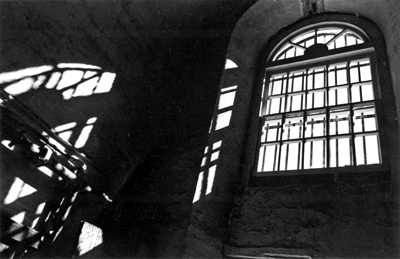All Nonfiction
- Bullying
- Books
- Academic
- Author Interviews
- Celebrity interviews
- College Articles
- College Essays
- Educator of the Year
- Heroes
- Interviews
- Memoir
- Personal Experience
- Sports
- Travel & Culture
All Opinions
- Bullying
- Current Events / Politics
- Discrimination
- Drugs / Alcohol / Smoking
- Entertainment / Celebrities
- Environment
- Love / Relationships
- Movies / Music / TV
- Pop Culture / Trends
- School / College
- Social Issues / Civics
- Spirituality / Religion
- Sports / Hobbies
All Hot Topics
- Bullying
- Community Service
- Environment
- Health
- Letters to the Editor
- Pride & Prejudice
- What Matters
- Back
Summer Guide
- Program Links
- Program Reviews
- Back
College Guide
- College Links
- College Reviews
- College Essays
- College Articles
- Back
Graphite Scratches on a Well Worn Map
A blank canvas stares back at me, daunting and larger than I had previously expected. With old-style lighting, and the curtains pulled back, the sun mellows through my room, mingling with an incandescent glow. The occasional flash of light brightens the space as the sun hits something shiny on my wall being tumbled by the fan, like fire dancing at the end of a match. I have my painting sheet out, with years of tempera paint and glitter, acrylics and oils, clinging to its yellow and green outdated print. I unfold my metal easel, fiddle with its adjustor knobs, and raise it to a correct working height for my little red stool. Grabbing the canvas, I sprawl out on the floor, snatching a couple of harder-graphite pencils from the bucket d’art that sits on the floor as I pass by my bed. Then the real work begins.
Staring at the canvas, for sometimes hours at a time, I flip through my well-loved and tattered sketch book, trying to find something to put down in thin lines upon its face. Something comes to mind, or a quick sketch grabs my attention, and I set to work diligently but lightly putting graphite to canvas, listening to the sound of pencil on the taut material like a drumstick swishing on a drum. I erase, and re-draw, erase again, trying to find the balance between degrading the texture of the canvas, and creating a finely-tuned drawing. I always add too many details to the initial sketch, rolling my heart into what will most likely be covered, but not obscured, by the first layer of paint, and I have to remind myself to erase the unnecessary. Even the smallest rub of the canvas or the stray mark of a pencil can be seen through the lighter paints of a piece, dulling its quality, like a cloud in an otherwise clear diamond. I let the curve of the object form as my arm arcs across the canvas, each bit vying for attention and space, drawing my eye to a focal point, as the earthy smell of the graphite dust brushes into the air. At last, when it is done, I place it on the easel, and lighten any dark marks.
Sitting on the floor again, I reach for my tub of paints and a set of pliers that I’ve permanently borrowed from the workbench downstairs. I set to work opening various tubes of pthalo green, to mix in with a purple shadow, cadmium red, to tack a sunset to the canvas, or burnt umber, to add depth to an otherwise flat landscape. I fill the little wells with hues for mixing, and begin concocting shades for the canvas on the flatter parts of the palette. I fill an old cup with water, and wet my brushes, unrolled from their tied satchels. I put brush to canvas, and set down the first layer, block shapes, and flat colors. After drying, or while the paints are still fresh, I add lowlights and shadows, accents, and bold color swatches. The days and sometimes weeks pass, and a smudge of paint that seemed so appropriate sticks out of the painting like a stain on new carpet, ruining its overall mood. So again, I bring out the brushes and the paint, carefully mix up a new color, and put the new shade over the once -fitting smudge. With each pass at the developing painting, the image comes into sharper focus, and the darks peek out from the lighter shades, both doing their part to enhance the depth and detail of a painting. At last, although a piece of art can never be truly complete, I finish up my work by adding the very brightest highlights, and letting everything dry as the metallic scent of paint dissipates into the air.
Travel is like the reworking of a painting on the blank canvas of one’s life. Staring at a clean canvas for the first time is like approaching a new country and culture blind. Some travelers prefer to dive in directly, and start “painting” their adventures, but others choose to plan, and set out all that they need, “sketching out” an itinerary and paring down every detail of their upcoming trip. Both styles work, but a rushed and impromptu painting can sometimes teach me more about myself, just as an unplanned expedition can teach me more about the place I’m visiting than any travel guide or website. Sometimes it is best to wander blindly into an event or to follow the masses of people, to figure out what you’re going to do that day. Other times, strict and careful planning can be useful, but as with a painting, I often add too much detail that I have to remove as the vacation continues. Dragging out my suitcase, favorite walking shoes, and travel clothes, is like pulling out the paints, canvas, and brushes- familiar and friendly in an unknown situation.
As I relax and settle into a country, I start to look around and take in the details. In the same way that I paint on a canvas, my initial impressions of a place deepen, and come into sharper focus. Seeing the line of people outside of a bakery, sitting for hours in a park, or going on the cheesy bus tours builds up, little by little, my understanding of a place. As the days pass, I soak in more and more images- a flash here or there of something unimportant that catches my attention, and my understanding grows. In seeing others, their ways of life, and the differences between cultures, I become more tolerant and knowledgeable. On a particularly good trip, I can put all of the experiences together into a “complete” work, mulling everything over until I think I comprehend a place. However, sometimes an expertly applied color at the beginning of a work can turn out to be a smudge on the entire piece, needing to be reworked. In other words, sometimes what I have assumed from one observation can be completely flipped by another in a different place, and that blot on my life’s canvas must be covered by a new color, based on new experiences.
In a painting, as in life, my understanding of a piece is never complete. I can always draw from new experiences, especially when I travel. Spending each day in the same city produces a sort of tunnel vision, but one that can be easily broken by experiencing something different either close to home or far away. Highlights stand out from the shadows, but both serve to add depth to the ever-changing canvas of life. And with each new event, I pull out my familiar paintbrushes and paints, and begin again to rework what I’ve already painted on my understanding of life.

Similar Articles
JOIN THE DISCUSSION
This article has 0 comments.
